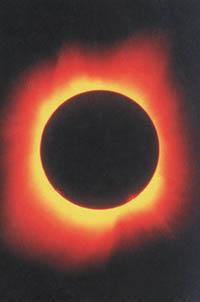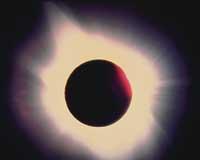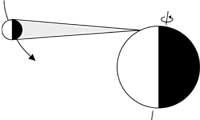Last solar eclipse of the millennium
1999/08/01 Imaz Amiano, Eneko - Elhuyar Zientziaren Komunikazioa Iturria: Elhuyar aldizkaria
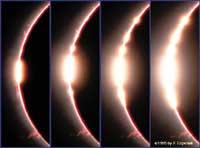
Sun eclipses take place all over the world (the last one that has been completed on February 26 of last year), but it is more difficult to happen in the territory in which we live. On August 11, for example, the last solar eclipse of the millennium will occur and although it will be observed in Europe and Southeast Asia, the total eclipse will only cover a narrow waist. However, such phenomena often generate great expectation.
After four decades of total absence of the solar eclipse in Europe, the next one will take place on 12 August 2026, also visible from Euskal Herria. However, the total eclipse will only be visible in the narrow washer that appears in the image, with an approximate width of 110 km. Apart from this washer the eclipse will not be total and for the Basque Country it will be around 80%. Therefore, in our case the sky will darken, but it must be borne in mind that at this time of year the sun is very strong, which will subtract visibility to the eclipse. However, the fact has undoubtedly generated curiosity.

Although the eclipse will exceed 13,000 km in total, its journey through Europe and Asia will depart in the UK, in Cornwall. The show will begin at 11:00 in the morning (official time here), but the total eclipse will be at 12:10, lasting 2'01". Last May people began making reservations to get closer by train (the ticket from London a week before Cornwall costs 129 pounds/163.9 euros) and expect that day there will be traffic problems. The eclipse will penetrate the continent at the height of Brittany. The event will begin at 11:12 and end at 13:51, with a total eclipse starting at 12:27 and lasting 2'18". However, they have announced that with statistical data, the time and the possibility of seeing the eclipse will be less than 50%. From there, through Luxembourg, passes through the village of Ulm, who was born 120 years ago Albert Einstein, and goes to Munich. It will arrive at 12:40. After touring Austria and Hungary, it will last longer in the Romanian area of Bucharest, 2'23", where it will have its half route. It will be at 13:10. The possibility of time showing the phenomenon will be 65%.
In
the Black Sea you can see the event from luxury boats and then start the eclipse tour in Asia. In Turkey you will pass through cities like Sivas and Diyarbakir and the village of Batman. The north of Iraq that will later visit Turkey and Iran will be the territories that offer the most opportunities of time. Finally, after crossing the Karatxi of Pakistan, he enters India (where, almost certainly, there will be cloudy weather) and ends his tour in the Gulf of India.
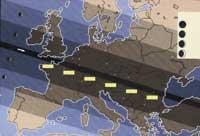
Yes, this day that we call the era of technology, we can follow the show via the internet without having to go to the countries mentioned above. Here are a couple of addresses that can help you. http://eclipse.span.ch/liveshow.htm http://eclipse.span.ch/europe.htm Also on NASA pages. Elhuyar. Science and Technique 53, You will also find more information about Sun eclipses in numbers 127 and 131.
Looking at the eclipse
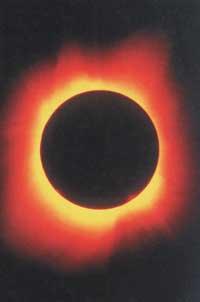
Observing the solar eclipse requires adequate protection measures, that is, the use of very dense filters, both in the eyes and in the tooling. They can only be removed at a short time when there is a total eclipse. Use the #14 glass of welding or the "sunglasses" that distribute specialized companies or magazines. If you use tools (binoculars or telescopes), take advantage of the projection. The projection consists of orienting the image of the sun obtained with the instrument towards the white surface so that the solar disc can be seen.
If you
want to get photos of a rather polished eclipse, you need to have a telephoto lens of at least 300 mm (or 8 times larger for camcorders), although with greater amplification you will get a better result. In these cases special solar filters will also be used for targets.

Gai honi buruzko eduki gehiago
Elhuyarrek garatutako teknologia




